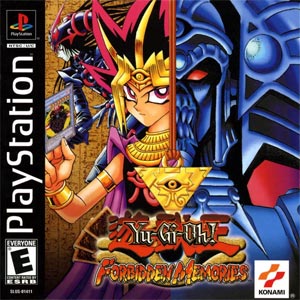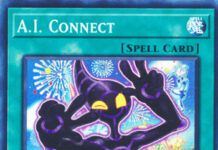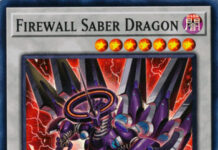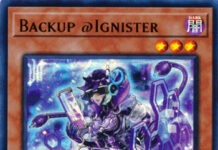In this article, I explain why the games have become stagnant in spite of the fact that Yugioh is a fun card game. Since this article was written a few years ago, Konami joined the free to play to model with mobile games, so we’ll see what happens:
Video games were one of many appendages of the massive Yu-Gi-Oh! franchise. From the beginning of the 21st century to today, dozens of Yugioh video games were released, far more than almost any franchise. However, the Yugioh games have received a wide range of appraisals from good, to bad to outright awful. They were commercial successful but many critics wrote that the games were not as accessible for them as they were for core fans.
Characteristic of them are typically the three promotional cards that come with them. Some are decorative (but not very useful) like Seiyaryu whilst others have been very powerful cards for their time, like Sinister Serpent, Harpie’s Feather Duster, D.D. Assailant, Dimensional Prison and Dark Bribe. This often supplemented the fact that the games were often not very good or innovative and helped absorb the cost where the software in and of itself would probably not be worth full price to many people.
The core mechanics of Yugioh have not changed as quickly as technology has. This is partly why the Yugioh games have not aged well.
Early Foundation
 Forbidden Memories (for Playstation 1) and Dark Duel Stories (for the Gameboy Color) were the first releases. They’re not impressive by today’s standards. The gameS had mostly vanilla monsters (very few spells, traps and effect monsters). They were mostly a low-skill contest of who could draw the stronger monster. The next game for the Gameboy Advanced (Eternal Duelist Soul) fixed this issue, thankfully, making it one of the better YGO games of it’s time.
Forbidden Memories (for Playstation 1) and Dark Duel Stories (for the Gameboy Color) were the first releases. They’re not impressive by today’s standards. The gameS had mostly vanilla monsters (very few spells, traps and effect monsters). They were mostly a low-skill contest of who could draw the stronger monster. The next game for the Gameboy Advanced (Eternal Duelist Soul) fixed this issue, thankfully, making it one of the better YGO games of it’s time.
Stairway to the Destined Duel was a multilingual YGO game with a tournament structure that allowed a little bit of freedom beyond the linear structure of “Face 5 opponents to get to the next level” of the earlier games. It was an all-around improvement to the other games, but it’s important to mention that the enemy deck design was lazy. Mai, a WIND and Harpie character, used “The Earl of Demise” (LV5 DARK vanilla Fiend-type monster) for some reason. Decisions like this show Konami’s total lack of attention to detail. The Gameboy Advance had other games like Reshef of Destruction, The Sacred Cards, and Spirit Caller, but ultimately stumbled on the beginning of a new sub-series with its World Championship game.
Playstation 2, Xbox and Gamecube each received a game. Playstation 2 (aside from the conventional Duelist of the Roses) got Capsule Monster Colloseum. Xbox got Dawn of Destiny. Gamecube ended up getting the most interesting game of the three, The Falsebound Kingdom, a turn-based RPG with RTS elements (no cards at all). This was a very interesting diversion from the typical card game rehash but the game had a very slow pace (a speed-up button could have helped), had poor production values, and lacked the depth that most other RPG’s had for their time.
At this point, it was clear that console games didn’t flatter Yugioh. Card games are better in 2D, as 3D would result in the need to focus more on animation than the gameplay.
Most of these games I mentioned had one fatal flaw. The player starts out with a weak deck, and has to perform tedious duels for 10 hours before they would even begin to get a big enough library of cards to where you could build a themed deck. And by then, enemies simply became too weak to pose a threat to your deck.
The Flood of Games
The PS2 sold well enough for it to get a few more games, but Konami decided it was much easier to support the Nintendo DS and Sony PSP due to lower cost of production. This began with Nightmare Troubadour, a game servicing the original anime whilst making great use of the dual screen touch controls, but had a limited card library restricted by what the characters would use rather than all the options the player would want to use. But with a new generation of handhelds, they’ve become able to display card pictures, which made it more immersive and required less of the imagination. A card being a black square surrounded by a mono-chromatic border without text is a thing of the past.
The PSP took the less conventional route with the GX Tag Force games. The colorful visuals of the YGO GX anime helped the presentation and the tag-team mechanics in the game worked great, but after the 2nd entry, it became rehash after rehash. The DS took an approach that was geared more toward real-life players with competitive ambitions by continuing the World Championship series. The problem was having to buy a new game every year instead of just being able to receive online updates. But why was this case?
The Shift
When the Yugioh games first came out, there were not a lot of interesting portable games. Yugioh stood out. However, more quality IP’s started coming out for the Gameboy Advanced, Nintendo DS, Sony PSP and so on. Now, Yugioh is no longer a big fish in a small ocean.
Releasing a great game with lasting value every 2-3 years rather than an okay game twice per year seems like a logical move, but it also seems that Konami has already calculated that many people will unconditionally buy the game for the promo cards. Two games in a several year frame wouldn’t make nearly as much money as six games in a several year frame, no matter how good they were.
Near the end of the Nintendo DS and Sony PSP lifespan, Konami stopped the gusher a bit, and ceased their yearly release regimen, which takes us to today. With portable gaming consoles less appealing to casual gamers due to smartphones with capable processors, it may just be more profitable to release $5 YGO iPhone apps rather than full $30 games, but digitial transactions remove the nostalgic joy of opening a pack of promo cards.
A New Era
Nowadays, you’ll find many people dueling online for free on a website like Dueling Network. Leave it to a few ordinary people with a passion for the game and some knowledge of computer programming to build a more accessible, effective and intuitive game than any of the ones that the Konami corporations have. Playing against other people online with an internet connection isn’t anything too new though. Others have tried to take YGO to the internet, such as Xerocreative’s Yu-Gi-Oh! Virtual Desktop (an application you needed to download to your desktop). There have been a few other actual websites where you could play against people online but they weren’t visually appealing and the user interface wasn’t simple and convenient. You had to use your imagination to believe you were actually playing a game of YGO until Dueling Network’s superb animation, colorful visuals and smoother interface pretty much became the standard.
Konami had Yu-Gi-Oh! Online for a while, but there was a fundamental issue with it. People do not want to pay for virtual cards when they could be paying for real-life cards instead. In fact, one of the most recent official game releases was Decade Duels for the Xbox 360 and Playstation 3 for a $10 price tag. The prospect of reviving the video game series for a new generation of online-capable consoles is a good one, but the game was plagued by a weak starting deck which pressures the player into purchasing $2 packs via micro-transactions in order to stay afloat.
The free to play model has existed for a while, and it’s a shame Konami never capitalized it.
Overall Legacy
The overall legacy of the offical YGO video games is mixed one. On the good side, it promoted the card game and helped extend it’s life. It provided a strong series of portable games to go along with classics like Pokemon, Mario and Zelda. Where many portable games in the early 21st century were just simple platforming or action games lacking depth, YGO let the player have access to a grand strategy game, with a customizable deck to beused in battles against a colorful cast of characters, all on portable devices. On the bad side, it was a series that put quantity over quality, and quick profit over actually creating games of artistic value. It cluttered the shelves, and the series eventually began to burn out after compromising much of it’s quality, re-hashing instead of innovating once it got to a comfortable point.
As for which of Konami’s games I would recommend, I would argue that Nightmare Troubadour has a timeless charm to it that remains in tact, or you might want to try one of the GX Tag Force games for the interesting tag-team mechanic. Most of the other games are either dated, lack personality or are beat out in quality by a lot of free software people use to duel by. This in effect has made the dozens of YGO games created a matter of quick profit and extension of the brand that have now lost their effectiveness and artistic merit. Millions of them are still in circulation, but most will likely remain as nostalgic relics like AOL discs rather than timeless masterpeices.
In the end, how you view the YGO video games is entirely a matter of perspective. Regular games can find them to be formulaic while fans may hold fonder memories.



